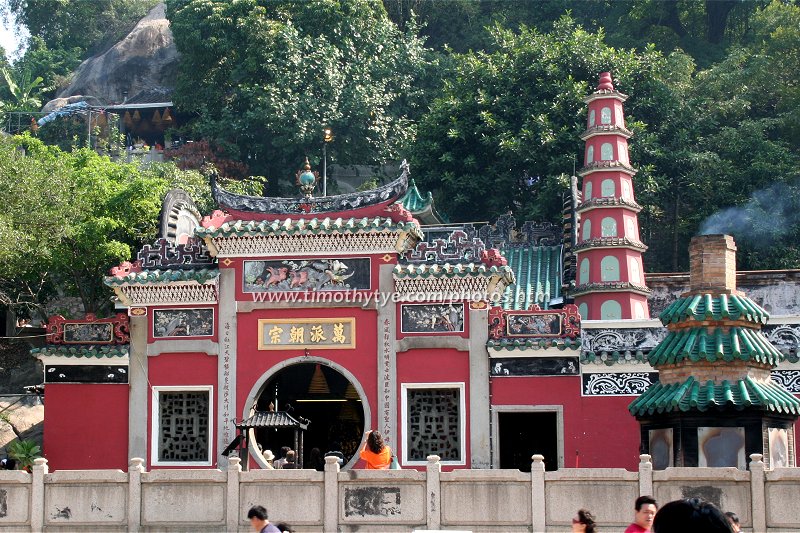 Roof ridges of A-Ma Temple (9 November 2007)
Roof ridges of A-Ma Temple (9 November 2007)
The A-Ma Temple is the oldest of the three major Chinese temples in Macau. It was first built in 1488, older than the colony itself, and in fact, the name Macau was derived from A-Ma Kok, meaning the Bay of A-Ma Temple. It is located facing the sea at the bottom of Rua do Admirante Sergio, on the southwest tip of the Macau Peninsula, with Barra Hill behind it.
The A-Ma Temple is dedicated to the goddess Matsu, known locally as A Ma, and known in Hong Kong as Tin Hau. The deity is a patroness of seafarers and fishermen. Temples dedicated to her includes the Thian Hock Keng in Singapore and the Hainan Temple in Penang.
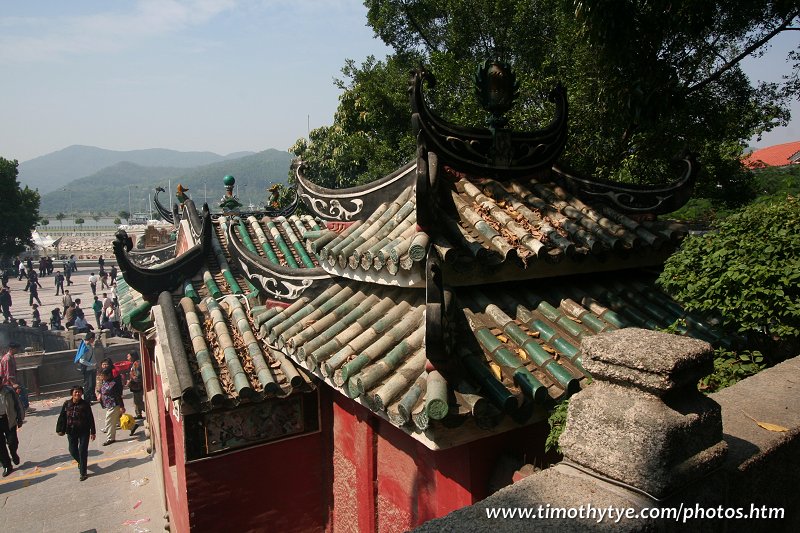 Roof ridges of A-Ma Temple (9 November 2007)
Roof ridges of A-Ma Temple (9 November 2007)
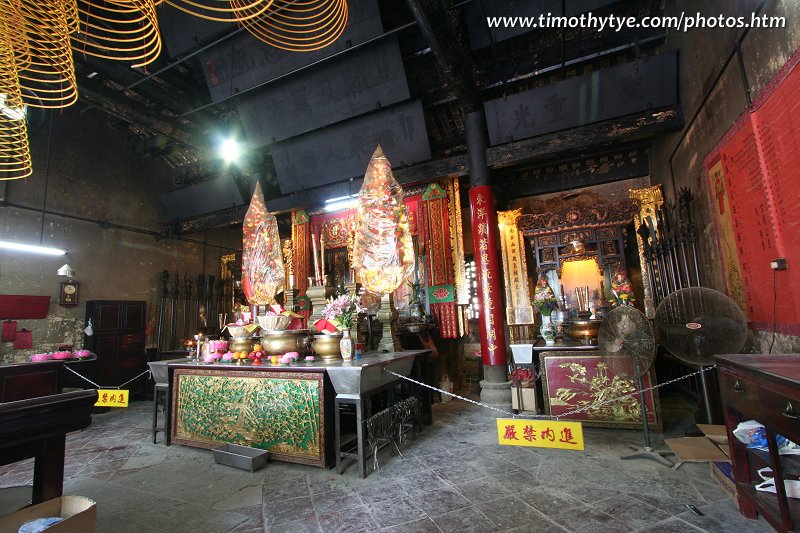 The prayer hall at A Ma Temple, Macau (9 November 2007)
The prayer hall at A Ma Temple, Macau (9 November 2007)
The origin of this temple is trace to a legend. Once, a junk sailing on the South China Sea on a clear day was suddenly caught in a tempest. Everybody thought they would not survive the storm when a young, attractive woman came forward and ordered the sea to calm down. Miraculously the storm died away and the sea became come. The junk arrived at the port of Hoi Keong. The woman stepped ashore and walked up to to top of a hill, which is today Barra Hill. There was a glowing halo of light around her, and she ascended into heaven. The A-Ma Temple was built on the spot where she set foot on land to pay tribute to her.
On a more prosaic level, the temple was built by fishermen who migrated to the Macau area from Fujian province in southern China during the Ming Dynasty (1368-1644). It was built at the entrance of the Inner Harbor, at a place where fishermen sheltered against stormy weather.
When Portuguese sailors arrived in the 16th century and asked for the name of the place, they were told "A Ma Gao", meaning Bay of A-Ma. This resulted in the peninsula being called Amagao, or by its modern name, Macau.
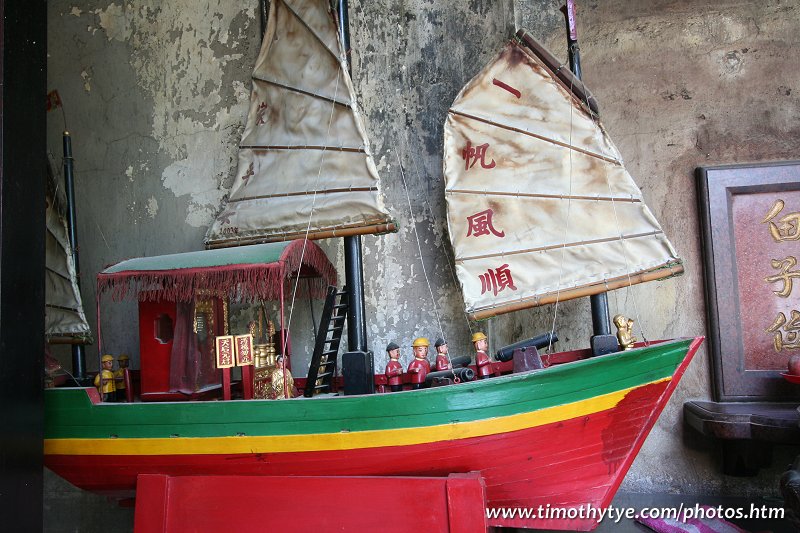 Boat replica at A Ma Temple, Macau (9 November 2007)
Boat replica at A Ma Temple, Macau (9 November 2007)
A-Ma Temple is built on the slope of Barra Hill. The complex is entered through the Memorial Arch. Passing this, paths wind towards different shrines in the complex. The four main buildings at the A-Ma Temple are the the Prayer Hall, the Hall of Benevolence, the hall dedicated to the goddess Guanyin (written Kun Iam in Macau) and the Buddhist pavilion. In addition, there are other pavilions dedicated to the different deities inspired by Taoism, Confucianism, Buddhism as well as local folk beliefs. Let's explore the four main halls.
The prayer hall is, I would say, the main building of the A Ma Temple. Also called First Palace of the Holy Mountain, it is the structure built for the worship of A Ma. It was first constructed in 1605 and rebuilt in 1629. We get this information from a stone inscription found in the temple. The prayer hall is a granite structure with lattice windows and up-pointing roof ridges.
The oldest extant structure at the A-Ma temple is the Hall of Benevolence, believed to have been constructed in 1488, and possibly have been rebuilt a few times. It is also a structure of granite and brick, and built into the hill. Its is covered with green glazed roof tiles and ornamental roof ridges.
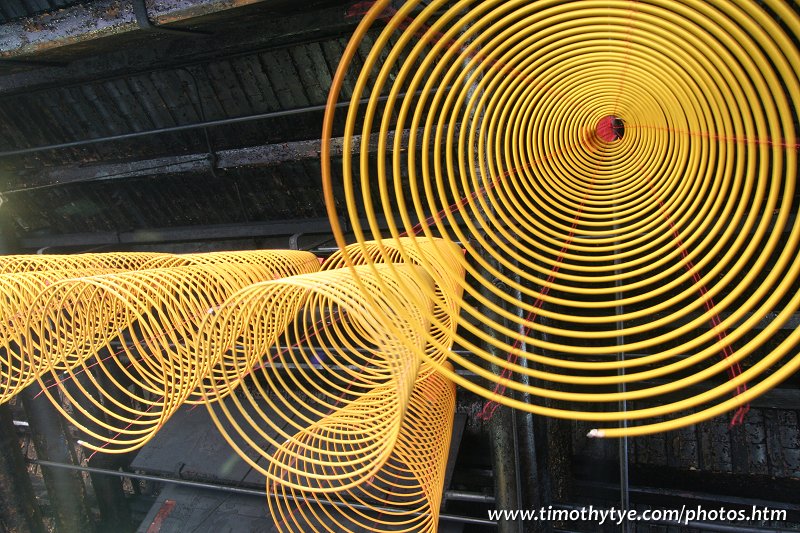 Coiled joss sticks at A Ma Temple, Macau (9 November 2007)
Coiled joss sticks at A Ma Temple, Macau (9 November 2007)
Climbing higher up the temple, we reach the Hall of Kun Iam. We do not know when it was constructed as no record was found to that effect. It is a plain brick structure with flush gable roofing, called yingshan.
The Buddhist pavilion, or Zhengjiao Chanlin was built of a grander scale. Within it is a shrine to A Ma and a resting area with yingshan roofing.
The busiest time of the year for A-Ma Temple is around Chinese New Year, and again in late April - early May, on the 23rd day of the third moon, when Cantonese operas are also performed for the pleasure of the deity.
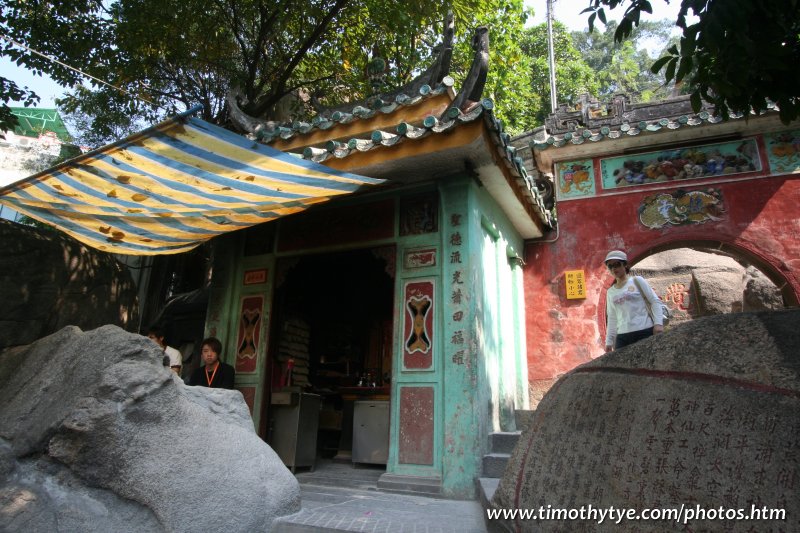 A shrine at A Ma Temple (9 November 2007)
A shrine at A Ma Temple (9 November 2007)
A-Ma Temple is one of the places within the Historic Centre of Macau, and is inscribed by Unesco as a World Heritage Site.
Getting there
Buses No. 6 and No 28B pass in front of the A Ma Temple. Buses going to the vicinity of the A Ma Temple include Bus 1, 1A, 2, 5, 6, 7, 9, 10, 10A, 11, 18, 21, 21A, 28B, and 34. Latest updates on Penang Travel Tips
Latest updates on Penang Travel Tips
 Map of Roads in Penang
Map of Roads in Penang
Looking for information on Penang? Use this Map of Roads in Penang to zoom in on information about Penang, brought to you road by road.
Copyright © 2003-2025 Timothy Tye. All Rights Reserved.

 Go Back
Go Back